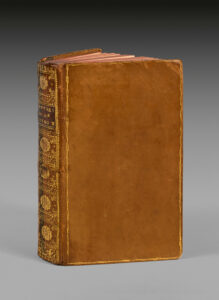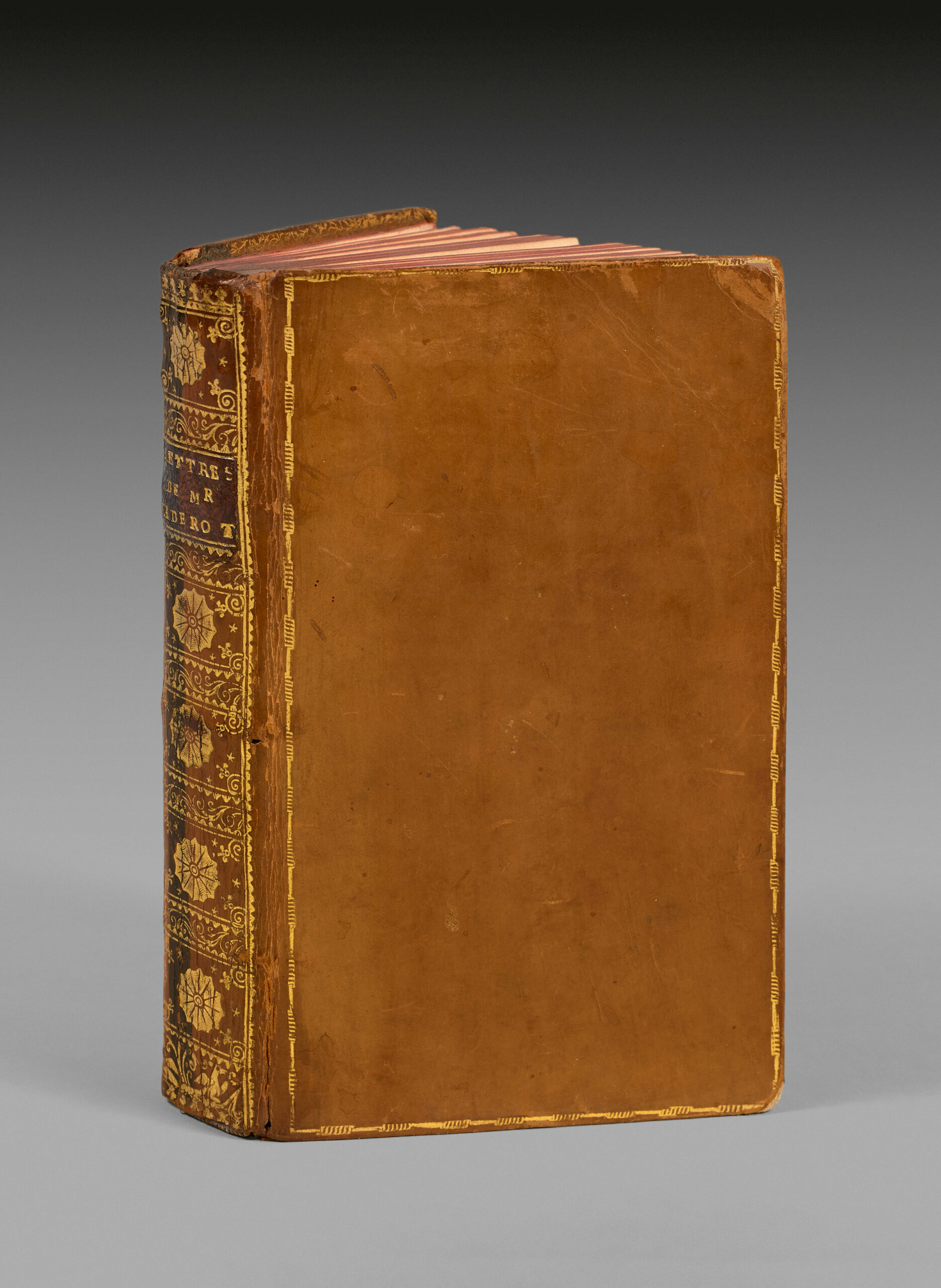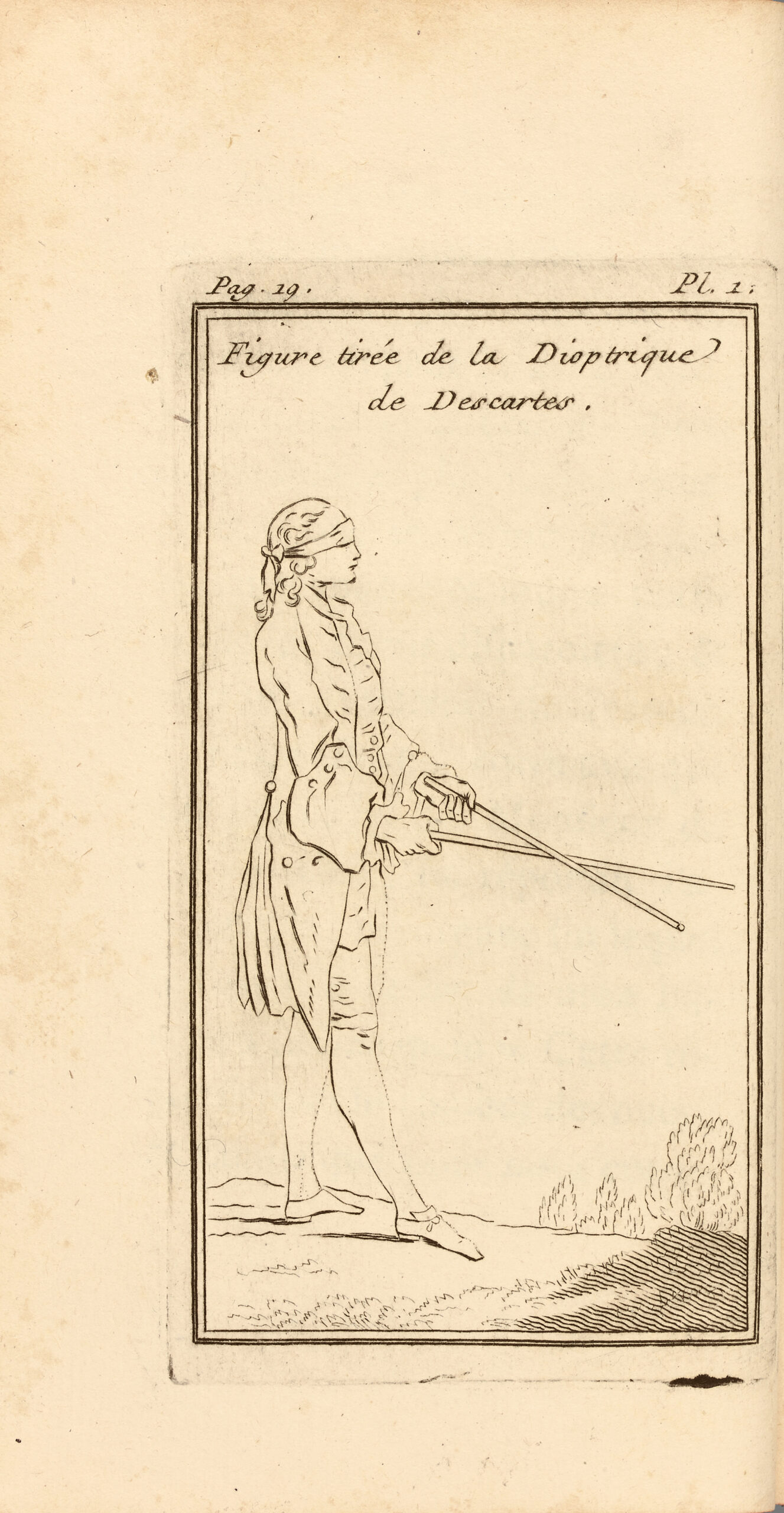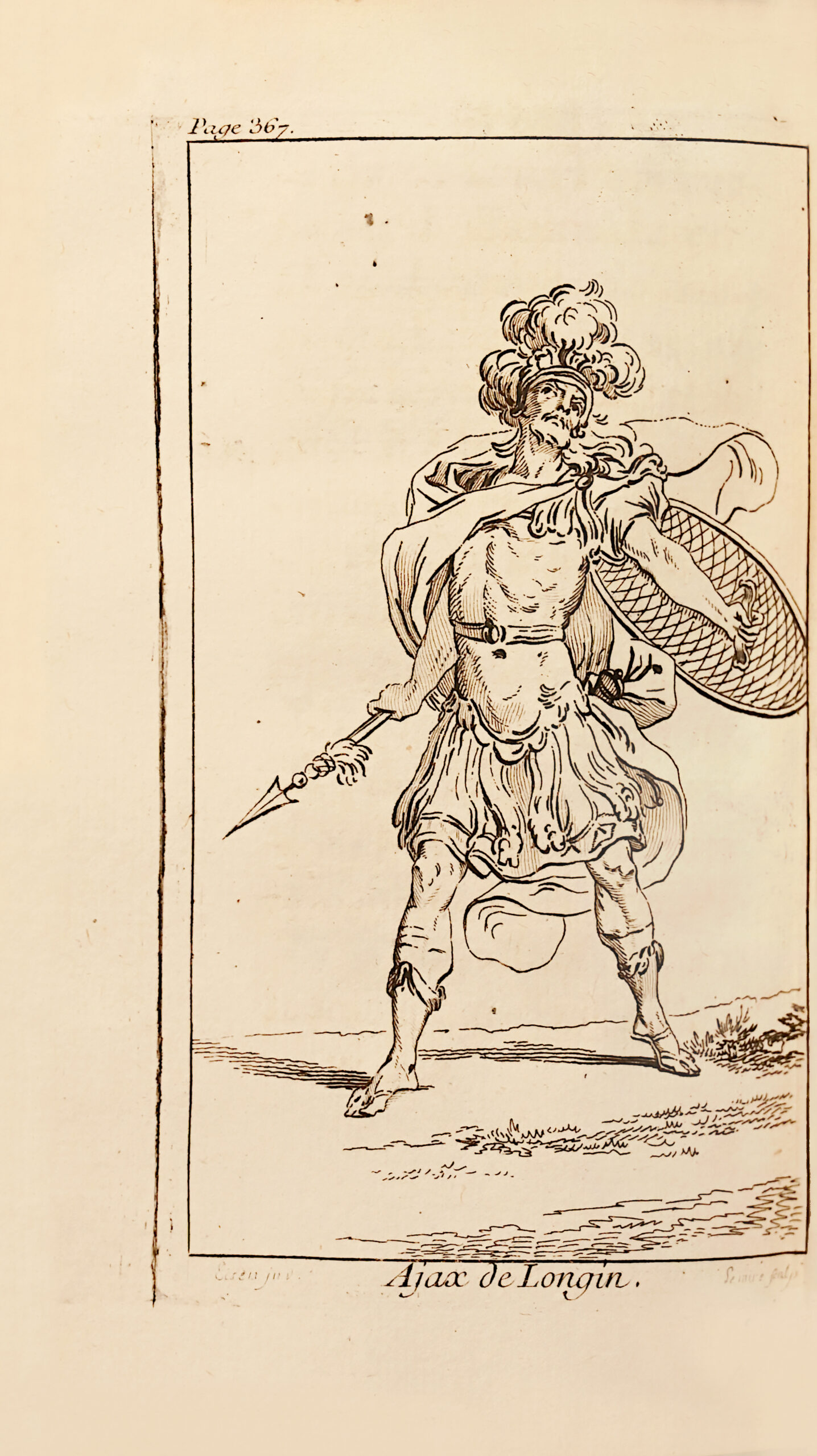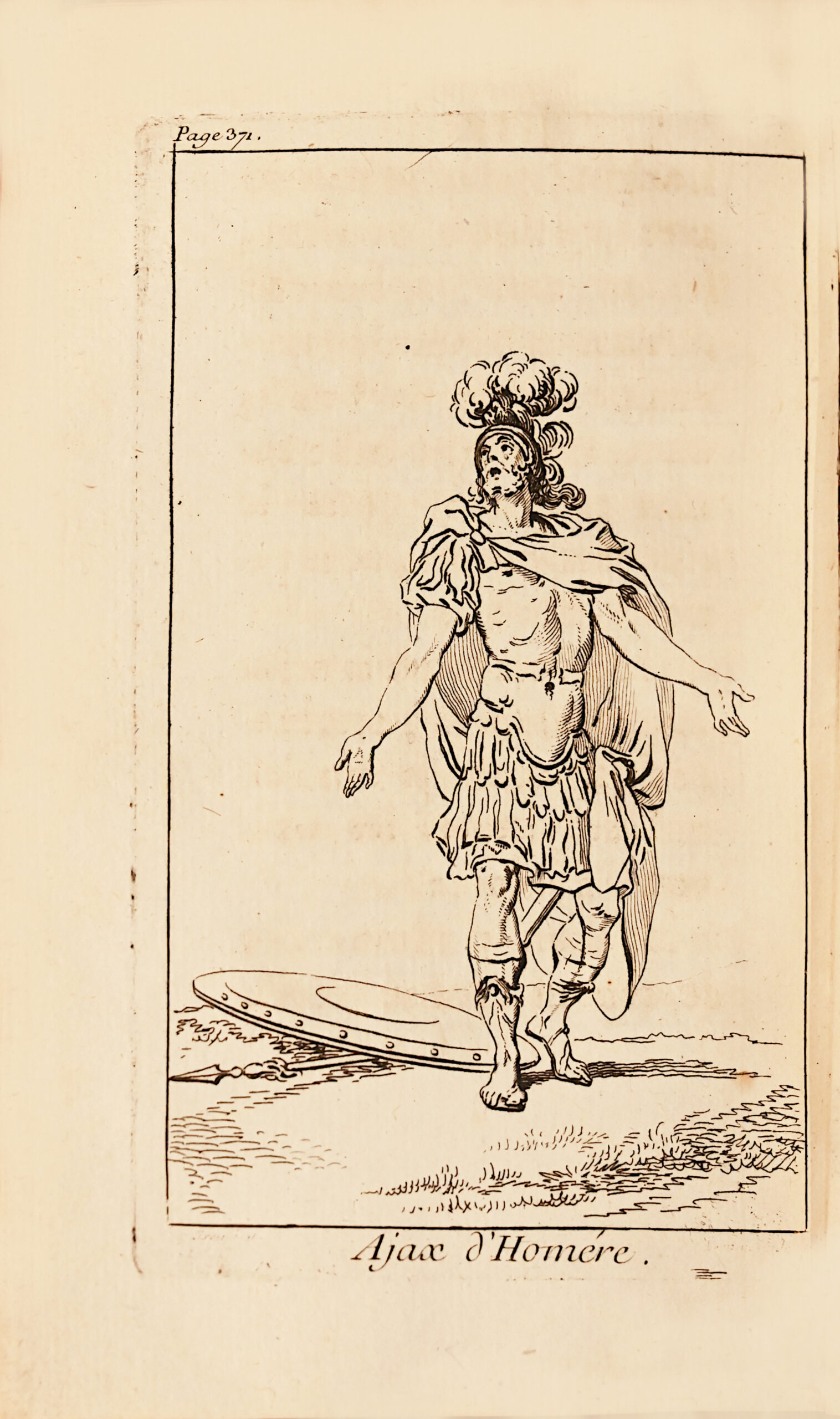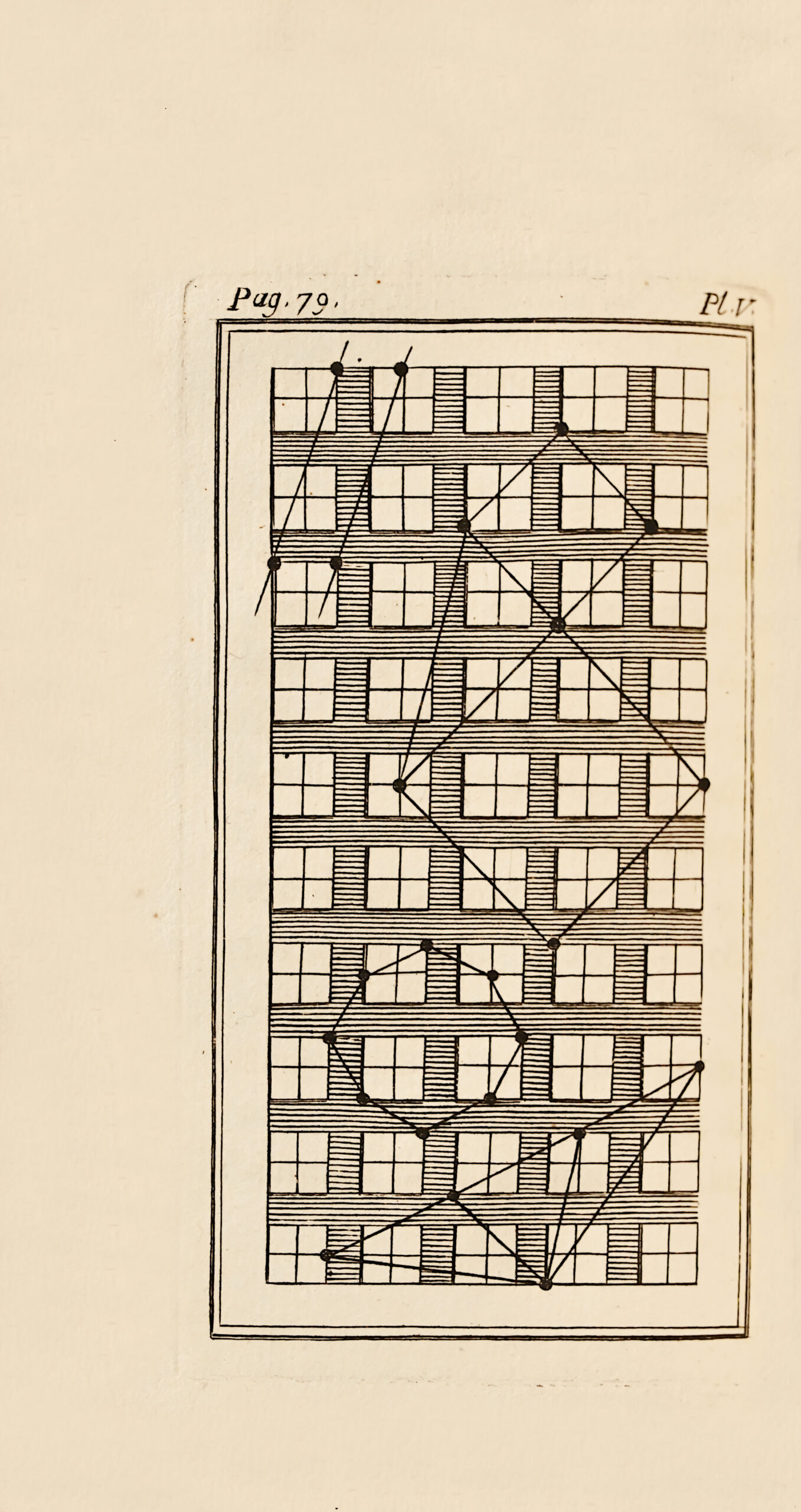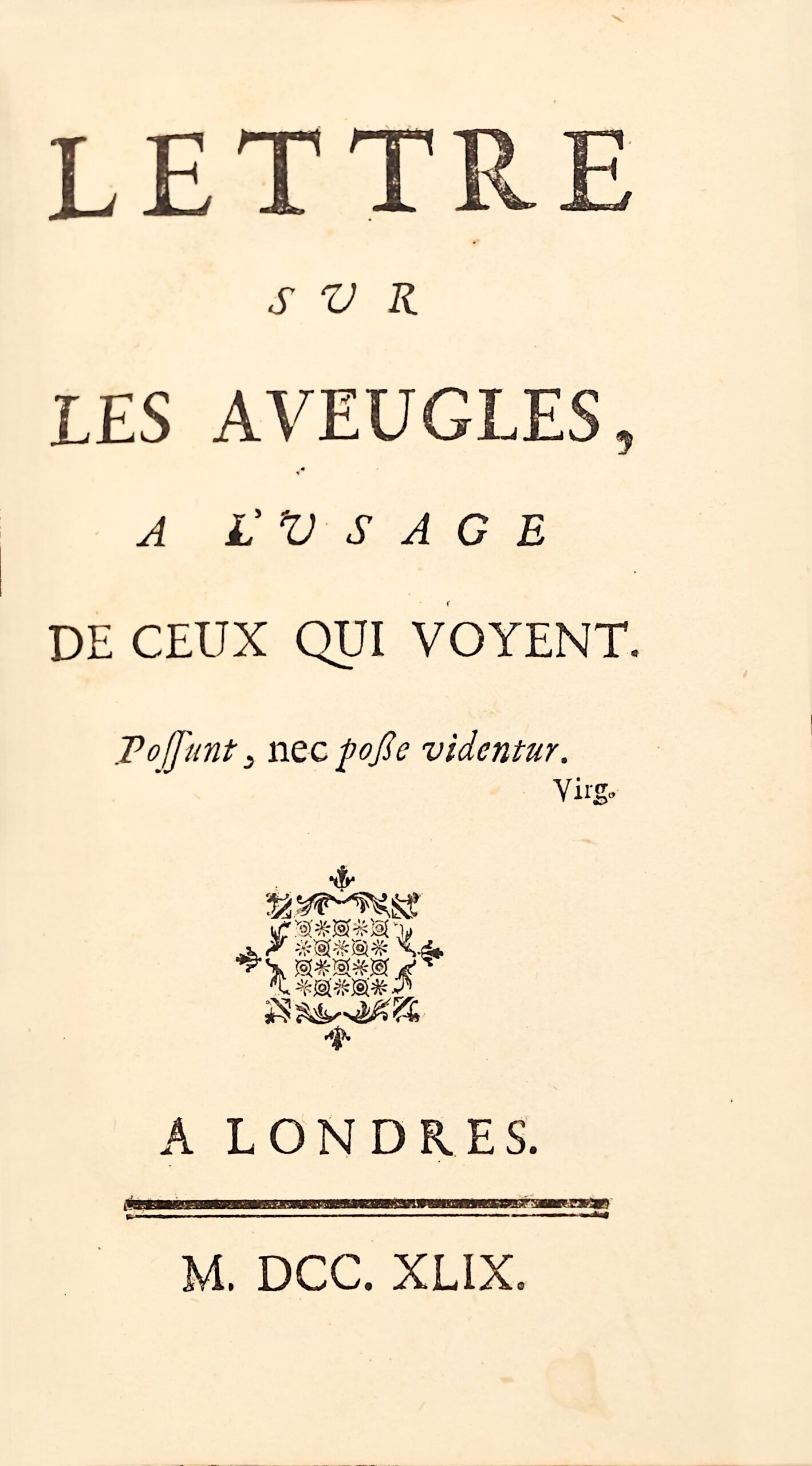Londres, 1749.
12 mo with 220 numbered pages and 1 p. of advert to bookbinders (pagination jumps from p. 209 recto to p. 211 verso), 6 engraved out-of-text figures.
– [Bound with] : II – Lettre de M. Diderot au R.P. Berthier, Jésuite. 1751. 56 pp.
-And: III – Additions Pour servir d’Eclaircissemens à quelques endroits de la Lettre sur les Sourds & Muets. Half-title and pp. 242-400 (1) l. of errata, 2 out-of-text plates.
Set of three works bound in a 12 mo volume. Blond calf, gilt fillet around the covers, flat spine decorated with gilt spiderweb, cold burnished title page, red edges. Contemporary binding.
156 x 94 mm.
First editions of these letters of literary criticism aimed at destroying the myth of “belle nature”, a cherished principle at the time, against which Diderot railed, while using these debates as a pretext to expand his own aesthetic theory.
I – “First edition of this philosophical and scientific work by Diderot, published in 1749, which caused a sensation and led to its author being taken to the dungeon at Vincennes.” Tchémerzine, II, 925; Adams, Bibliographie des œuvres de Denis Diderot 1739-1900, t. 2, LG1; Cioanescu 24111.
This fascinating little text was written by Diderot after the first cataract operation on a woman born blind by doctor Rêumur, who had invited a number of philosophers to witness the “subject’s” first rêctions to light.
This led Diderot to the idê of taking advantage of blindness as an alternative way of apprehending the world, illustrated by three figures: the blind-born Puisêux, the famous English geometer Saunderson, and Melle de Salignac. The work tackles the problem of the senses, morality, aesthetic judgment and religion.
“Diderot’s approach enables him to formulate intuitions that revêl the strength and vigor of this bold, encyclopedic mind: the emergence of a sixth sense through the exacerbation of the other senses, the sensitivity and energy of matter, transformist idês and the notion of evolution, in which chance plays a role, the calculation of probabilities, etc.” (En Français dans le texte, n°153).
The work was published anonymously, but the authorship was attributed to Diderot, who was imprisoned in Vincennes a month later.
Diderot, an atheist philosopher, laid the foundations of sensualism: our senses are the basis of our idês and beliefs. “If the blind man does not have the same beliefs as the rest of us, it is because his eyes fail him. Our belief in God is not in itself divine; it is derived from our very senses.
The work is adorned with six unsigned out-of-text engraved plates, including a figure from Descartes’ “Dioptrique”.
II – First edition.
Adams, LE1; Tchemerzine, II, 930.
As êrly as February 1751, Diderot bantered back at the Jesuit Berthier who, in January, had criticized the Encyclopedia project in his “Mémoires de Trévoux”, based on the prospectus, in particular for plagiarizing Francis Bacon’s encyclopedic project. Diderot responded by crushing Berthier with his irony and attacking the Jesuit order. As an attractive sample of the content of the work to come, Diderot delivers, in this “Lettre à Berthier”, the entirety of his “Art” article (from page 15), “one of the most elaborate and profound given to the Encyclopedia” (according to P.-P. Gossiaux in “Diderot et son temps”).
While Diderot’s facetious reply put the laughter on his side, the scholarly press, which had expected a substantive justification, was more severe towards this “Letter” and less satisfied with Diderot’s response. Nevertheless, the ensuing controversy aroused the public’s curiosity and led to an influx of subscribers to the Encyclopedia, more than a thousand by the end of April.
III – The Additions were published by Diderot in May 1751, three months after the first issue of the Lettre sur les Sourds et Muets.
Supplement printed to complete the 1st issue of the “Lettre sur les sourds et muets” published in February 1751, in which the last quire, signed X, consisted of p. 241 (X1r°) and the table of contents (X1v°-X6v°).
Written in response to criticism of the “Lettre sur les sourds et muets”. The 1st issue of the “Lettre sur les sourds et muets” and the additions were bound together in different ways, depending on whether they were bound by the booksellers or the rêders themselves. The resulting work has been catalogued separately.
Bibliographie des œuvres de Denis Diderot, 1739-1900 / David Adams, Paris, 2000, t. 2, p. 227-228, LH3; “La Lettre sur les sourds et muets de Diderot” / Wallace Kirsop in “Bibliographie matérielle et critique textuelle : vers une collaboration”, Paris, 1970 (Biblio notes, 1).
The Additions are adorned with 2 copper-engraved plates by Le Mire after Charles Eisen.
The half-title of the Additions is pasted on page 241, and the errata lêf is pasted on a title of the second issue of the Lettre.
A precious and bêutiful copy of this set of Diderot’s philosophical trêtises on esthetics, bound in contemporary blond calf.
